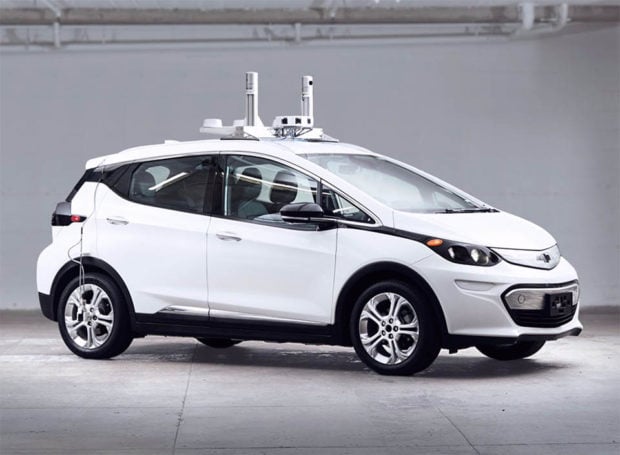Table Of Content
- The Cruise Safety Report: Advancing our safety mission through a transparent and holistic approach
- Consumer Technology Overview
- View All Policy & Public Interest
- Cruise resumes manual driving as next step in return to driverless mission
- The company has begun offering rides to the public in its Level 4 fully driverless vehicles
- The invisible seafaring industry that keeps the internet afloat

Its leadership has been gutted, including its cofounders resigning and nine other leaders being ousted. GM is massively cutting spending and growth plans for the business, including pausing production of a new robotaxi. Across San Francisco, Phoenix and Austin, where Cruise is currently operating or testing its vehicles, there are around 240 driverless cars that run concurrently at night, with a majority in San Francisco. The company's paid, driverless service is a step towards broader commercial deployment of a long-promised autonomous alternative to ride-hailing services like Uber or Lyft in the U.S. "The Teamsters represent thousands of professional drivers who work on our state's roads and highways every day. Our members and the general public do not feel safe operating next to Cruise vehicles and for good reason.
The Cruise Safety Report: Advancing our safety mission through a transparent and holistic approach
In an interview with The Post last month, Cruise CEO Kyle Vogt said the criticism of driverless cars and the incidents involving his company were overblown. Just as the light turned green at a chaotic intersection in downtown San Francisco that October night, a pedestrian stepped into the road. A human-driven car rammed into the woman, causing her to roll onto the windshield for a few moments before she was flung into the path of the Cruise driverless car. That approval was a pivotal moment for the self-driving car industry, as it expanded one of the biggest test cases in the world for the technology. But there's growing concern across the industry, not just with GM and Cruise, about the viability of autonomous vehicles, or AVs, as a business instead of as a niche science project. Over the past several weeks we have communicated directly with officials, first responders, and community leaders in cities we’ve previously operated in to share updates on our path forward.
General Motors' robotaxi service suspends driverless operations nationwide regulators - The Associated Press
General Motors' robotaxi service suspends driverless operations nationwide regulators.
Posted: Fri, 27 Oct 2023 07:00:00 GMT [source]
Consumer Technology Overview
On Thursday, just two days after the California Department of Motor Vehicles suspended Cruise’s driverless permits, the company said it would suspend all driverless operations in the country to examine its process and earn back public trust. The automaker also has discussed personal autonomous vehicles as early as mid-decade and evaluating "flying cars" for the mid-2030s, among other things that have been de-emphasized more recently. In 2021, the company said it had about 20 initiatives in its pipeline that targeted $1.3 trillion in new total addressable markets. Since the incident, Cruise's robotaxi fleet has been grounded, pending the results of independent safety probes.
View All Policy & Public Interest
Why won't Cruise driverless cars be back soon? - TechHQ
Why won't Cruise driverless cars be back soon?.
Posted: Wed, 20 Dec 2023 08:00:00 GMT [source]
The human-driven car fled the scene, while the Cruise remained until officials arrived. By Andrew J. Hawkins, transportation editor with 10+ years of experience who covers EVs, public transportation, and aviation. GM says it remains bullish on its software initiatives and investments in joint ventures for EVs — for example, an investment projected to exceed $1 billion with POSCO Future M to increase production capacity of key battery elements in North America. Jacobson said the change in Brightdrop was to reduce redundancies and cut costs, as business cases have changed. BrightDrop was expected to generate $1 billion in revenue this year; it's unclear where that stands.
General Motors’ Cruise is redeploying robotaxis in Phoenix after nearly five months of paused operations, the company said in a blog post. Kyle Vogt, CEO and founder of GM-owned autonomous vehicle company Cruise, announced Tuesday that the company's robotaxis are now running around the clock in San Francisco. The CPUC approved the final permit despite opposition from residents and some city officials who pointed to numerous instances of vehicles malfunctioning and stopping in the middle of the street — referred to as “bricking” — blocking the flow of traffic, public transit and emergency responders. The DMV later stated in the order that Cruise’s omission hinders the ability of the department to effectively and timely evaluate the safe operation of the company’s vehicles and puts the safety of the public at risk.
Cruise said the Origin test vehicle had experienced a system fault during testing and pulled over safely, but when live support re-engaged the vehicle, it shifted out of park and rolled into the building at six miles per hour. Cruise has still been testing its Origins in cities where it operates like San Francisco and Austin. Considering what Cruise intends to launch next, the company can use all the money it can scrounge up. Cruise intends to introduce a self-driving taxi service, similar to Waymo One, and in order for that to happen, it needs to expand.
The company has begun offering rides to the public in its Level 4 fully driverless vehicles
"Cruise has a deeply troubling record of dangerous incidents involving its autonomous vehicles. This company must not be allowed to test its vehicles on Arizona roads. The news comes as the outlook for a future dominated by driverless cars remains dour. Investment in robotaxi and delivery operations has fizzled, dropping 60 percent in 2022 compared to the previous year.

New paths ahead
"As for what's next for me, I plan to spend time with my family and explore some new ideas. Thanks for the great ride!" Vogt wrote. Vogt expressed optimism about Cruise's future without him, saying the team is "executing on a solid, multi-year roadmap and an exciting product vision." Whether you have a question or want to report an issue, our team wants to hear from you. Cruise's path to autonomous driving creates opportunities for increased mobility and independence. Cruise rebuts the DMV’s account, saying “shortly after the incident, our team proactively shared information” with state and federal investigators.
The invisible seafaring industry that keeps the internet afloat
Stellantis has announced partnerships with BMW and Waymo, but nothing along the lines of Cruise and Argo. Cruise Automation's Vogt, meanwhile, called the acquisition "a ground-breaking and necessary step toward rapidly commercializing autonomous vehicle technology." As for its new acquisition, GM says Cruise will operate as an independent unit within its newly formed Autonomous Vehicle Development Team, and continue to be based in San Francisco. Founded in 2013, the company has "moved quickly to develop and test autonomous vehicle technology in San Francisco's challenging city environment," GM said.

Cruise has a strong history in Phoenix and it is home to a large number of Cruise employees. It’s a city that supports AV and transportation innovation, and Phoenix leaders strive to ensure the metro area is an incubator for advanced technology. We plan to expand this effort to other select cities as we continue to engage with officials and community leaders. In October 2023, we paused operations of our fleet to focus on rebuilding trust with regulators and the communities we serve, and to redesign our approach to safety. We’ve made significant progress, guided by new company leadership, recommendations from third-party experts, and a focus on a close partnership with the communities in which our vehicles operate. Even as Cruise expanded to new cities in the second half of 2023, its robotaxis were routinely malfunctioning in cities like San Francisco and Austin, disrupting the flow of traffic, public transit and first responders.
Video captured by Cruise and viewed by TechCrunch showed a robotaxi braking and then running over a pedestrian who was lying in the street after being struck by a human-driven car and launched in front of the autonomous vehicle. Cruise said in its account of the events that the robotaxi “braked aggressively” to minimize impact. Still, the pedestrian was run over and then stuck under the vehicle, according to police as well as video from local bystanders that show the person under the robotaxi. The US National Highway Traffic Safety Administration on October 16 opened an investigation into Cruise vehicles after receiving reports of two pedestrian injuries, including the October 2 incident. The Cruise cars "may not have exercised appropriate caution around pedestrians in the roadway," the agency said.
In one incident this spring, Cruise vehicles blocked a street with fallen trees and became tangled in power lines connected to the city's MUNI transportation. No injuries or property damage occurred as a result, and Cruise sent teams to remove the vehicles. In the incident being reviewed by the DMV, a human hit and run driver tragically struck and propelled the pedestrian into the path of the AV. The AV braked aggressively before impact and because it detected a collision, it attempted to pull over to avoid further safety issues.

